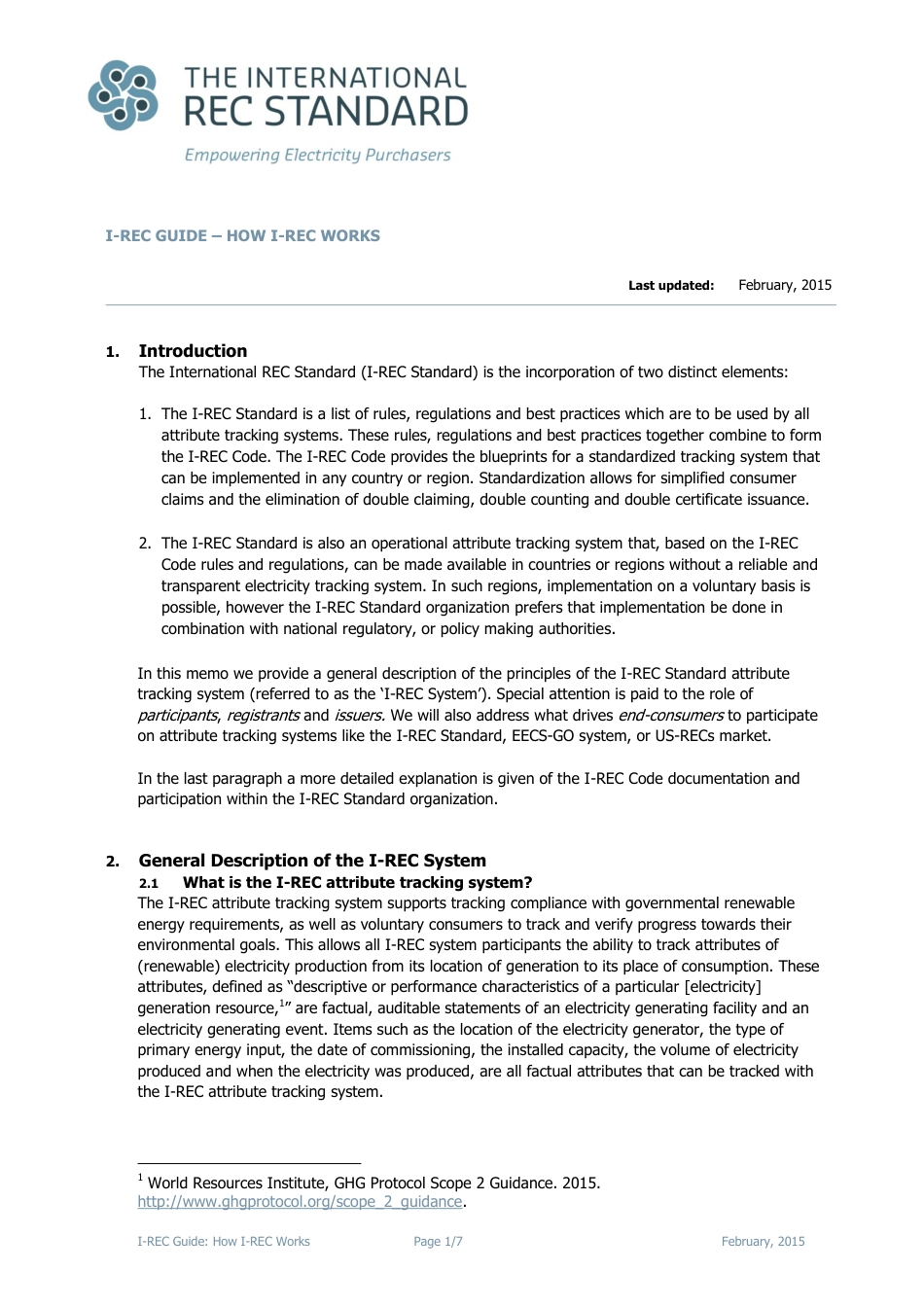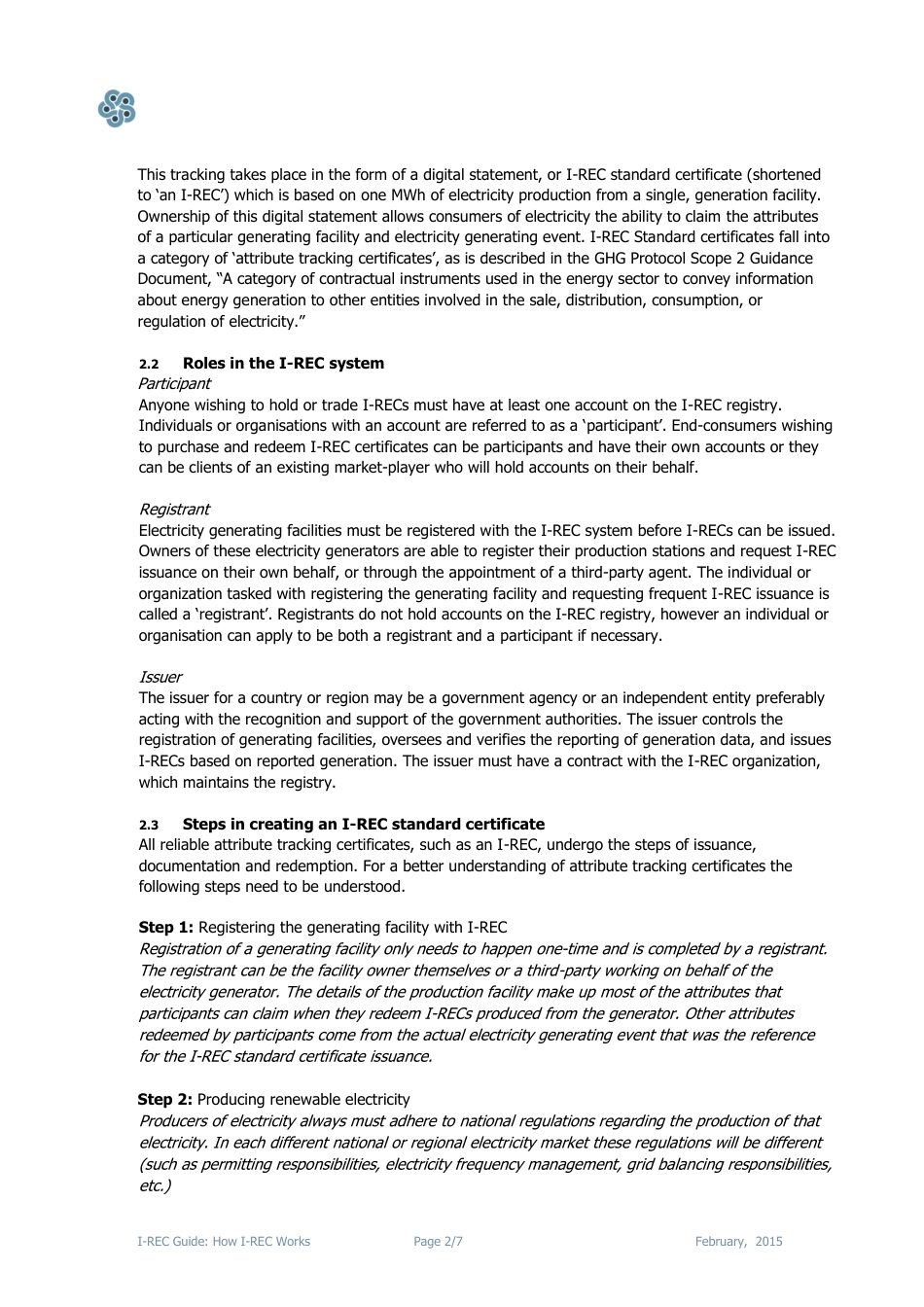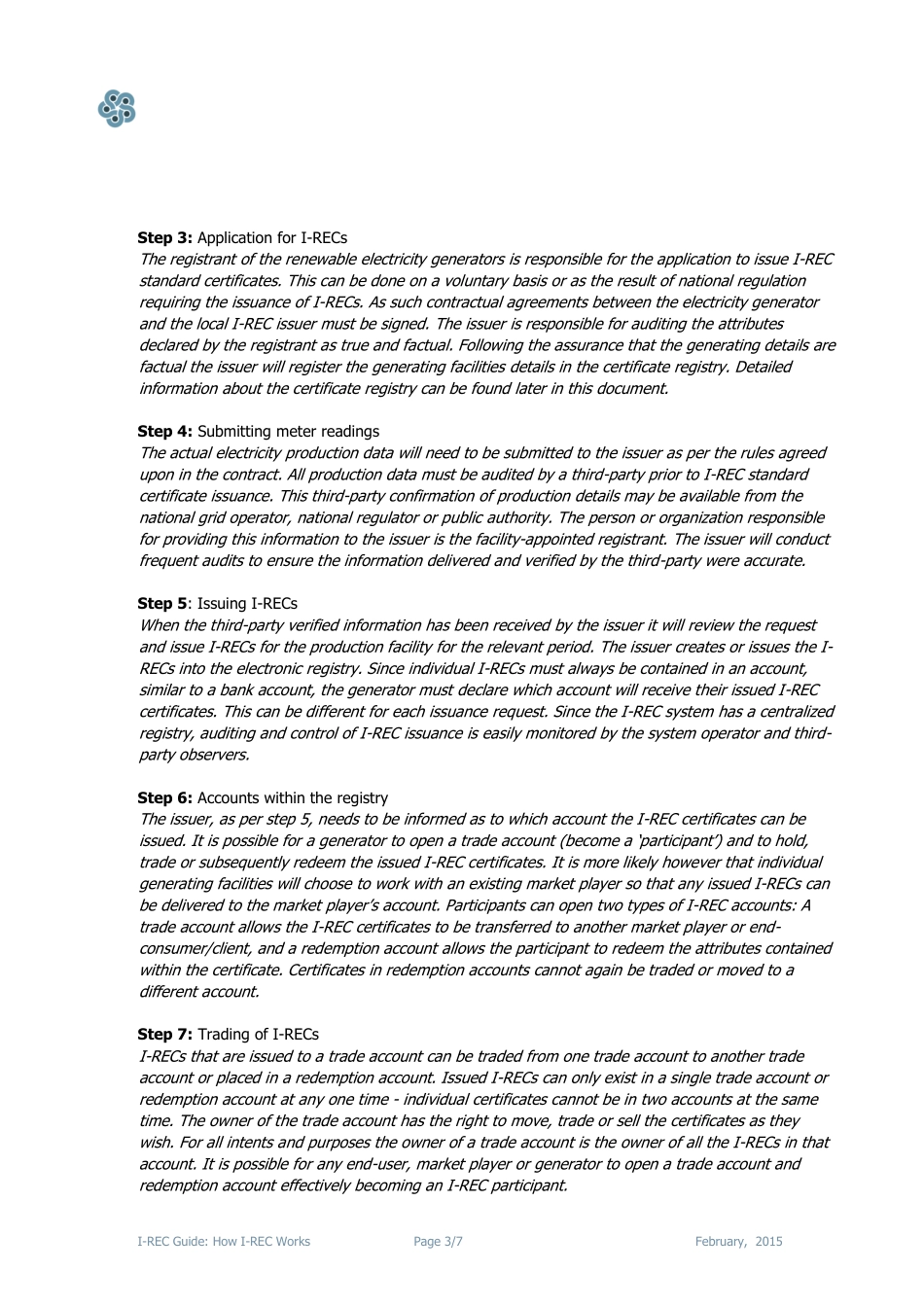I-REC Guide: How I-REC Works Page 1/7 February, 2015 I-REC GUIDE – HOW I-REC WORKS Last updated: February, 2015 1. Introduction The International REC Standard (I-REC Standard) is the incorporation of two distinct elements: 1. The I-REC Standard is a list of rules, regulations and best practices which are to be used by all attribute tracking systems. These rules, regulations and best practices together combine to form the I-REC Code. The I-REC Code provides the blueprints for a standardized tracking system that can be implemented in any country or region. Standardization allows for simplified consumer claims and the elimination of double claiming, double counting and double certificate issuance. 2. The I-REC Standard is also an operational attribute tracking system that, based on the I-REC Code rules and regulations, can be made available in countries or regions without a reliable and transparent electricity tracking system. In such regions, implementation on a voluntary basis is possible, however the I-REC Standard organization prefers that implementation be done in combination with national regulatory, or policy making authorities. In this memo we provide a general description of the principles of the I-REC Standard attribute tracking system (referred to as the ‘I-REC System’). Special attention is paid to the role of participants, registrants and issuers. We will also address what drives end-consumers to participate on attribute tracking systems like the I-REC Standard, EECS-GO system, or US-RECs market. In the last paragraph a more detailed explanation is given of the I-REC Code documentation and participation within the I-REC Standard organization. 2. General Description of the I-REC System 2.1 What...



